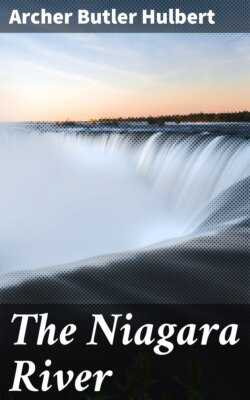Читать книгу The Niagara River - Archer Butler Hulbert - Страница 30
На сайте Литреса книга снята с продажи.
The Mouth of the Gorge.
From a photograph by Notman, Montreal.
ОглавлениеAbout half-way down the descent, the point where General Brock fell is reached, which point is marked by a massive stone monument set in place in 1861 by King Edward VII., then Prince of Wales. Just below to the right is seen an old, ruined stone house which was General Brock's shelter after being wounded, and in which was printed, in 1792, the first newspaper of Upper Canada. The bridge is soon reached, in the crossing of which, a fine view of the last mad rush of the waters is gained as they issue from the gorge into the placid stream leading to the lake below. On they come with the waves piled high in the centre, tearing along in a mad fury, until they seem to be pacified by a power stronger even than their own; and they glide smoothly along to the end of their course in the lower lake.
On the American heights stood old Fort Gray, connected with the history of the War of 1812. On the American shore was the head of navigation, and up the cliff all the freight sent over the old portage was hoisted by hand and later by machinery. High up on the American cliffs, half-way between the Whirlpool and Lewiston, is the famous "Devil's Hole," an interesting cave known among the Indians, we are told, as the "Cave of the Evil Spirit." Here, it has been stated, geologists find some of the clearest evidences of the former existence of the presence of the Falls in that far day when the migration had extended thus far up the river from the escarpment at Lewiston.
Much has been said about the rapids of the river below the Falls—the lesser Rapids of Niagara. What of this seething, spouting, tumbling mass that races along below these towering cliffs, maddening, ungovernable, almost horrifying to gaze upon? It is very singular how little is said about this torrent. They illustrate very significantly the fact that mere power has little of charm for the mind of man; it interests, but often it does not please or delight. In our chapter on the foolhardy persons to whom these bounding billows have been a challenge, and who have attempted to navigate or pass through them, are descriptions of their savage fury and wonderful eccentricities. The most interesting fact respecting these great rapids is the unbelievable depth of the channel through which they race, since it sometimes approximates, according to the best sources of information, the height of the towering cliffs that compose the canyon. By government survey we know that the depth of the river between the Falls and the cantilever bridge is two hundred feet. The Whirlpool is estimated as four hundred feet deep, and the rapids above the Whirlpool as forty feet deep; the rapids below the Whirlpool are thought to be about sixty.
The romantic situation of the two ancient towns, Lewiston and Queenston, at the foot of the two escarpments, on opposite sides of the river, is only equalled by the absorbing story of their part in history when they were thriving, bustling frontier outposts. The beauty of the locations of these interesting towns contains in itself sufficient promise of growth and prosperity equal to, or exceeding, that of beautiful Youngstown, near Fort Niagara, or Niagara-on-the-Lake on the Canadian shore. This lower stretch of river teems with historic interest of the French era and especially of the days when the second war with Great Britain was progressing; in our chapters relating to those days will be found references to these points of present-day interest in their relation to the great questions that were being settled by sword and musket, by friend and foe, who met beside the historic river that empties into Lake Ontario between old Fort George and old Fort Niagara.
